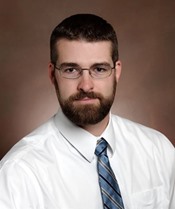Program Information
Reducing Fluoroscopy Operator Dose by Placing Lead Aprons On the Patient: Does It Live Up to the Hype?
M Silosky*, P Lowry , J Smith , R Marsh , University of Colorado School of Medicine, Aurora, CO
Presentations
TH-AB-201-7 (Thursday, July 16, 2015) 7:30 AM - 9:30 AM Room: 201
Purpose:
Staff radiation exposure during interventional fluoroscopy procedures is an ongoing concern. Recent studies tout reduced radiation exposure to fluoroscopy operators through the use of lead-equivalent shielding placed on the surface of the patient, claiming dose reductions of up to 75%. We sought to validate this claim when lead-equivalent shielding is wrapped around the patient’s lower abdomen and upper legs during kyphoplasty.
Methods:
An anthropomorphic torso phantom was placed on the interventional table. The X-ray tube, detector, and table height were adjusted by a musculoskeletal radiologist who routinely performs kyphoplasty procedures. Air kerma rate (AKR) was measured using a survey meter appropriate for low-energy scattered X-rays (Unfors RaySafe) with different combinations of shielding placed on the phantom and/or in front of the survey meter. Shielding placed in front of the survey meter simulated the protective effect of an operator’s own lead apron. Measurements were made at various angles and distances around the phantom; fluoroscopic acquisition parameters were constant for all measurements.
Results:
1) Wrapped shielding on the phantom reduced AKR at the meter over a very limited angle - when the wrapped shielding was directly between the phantom and the survey meter (87% AKR reduction).
2) No statistically significant difference in AKR was observed when the wrapped shielding was not directly between the phantom and the survey meter (p=0.97).
3) Shielding placed in front of the survey meter, representing protection of an operator’s apron, reduced measured AKR by over 90% at all angles.
4) Wrapped shielding did not provide additional dose savings when shielding was also placed in front of the survey meter.
Conclusion:
The use of wrapped shielding would not further reduce radiation exposure to an operator who is wearing a lead apron. Claims that wrapped shielding reduces staff dose may be vastly overstating the benefit to fluoroscopy operators.
Contact Email:


